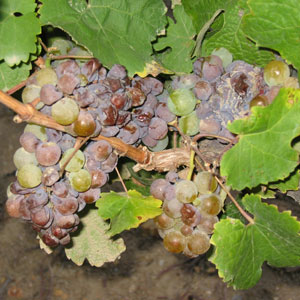Is there anything nicer to round off your meal than a really good glass of dessert wine? Here’s how the best are made.
Noble Late Harvest
All the world’s most expensive and longest-lived sweet wines are made from grapes affected with a fungus called Botrytis Cinerea or Noble Rot. Under certain climatic conditions (misty mornings or evenings, sunny dry afternoons), grapes develop this specific kind of rot. This fungus affects the grapes, causing them to lose water but crucially, without splitting the skin and exposing the remaining flesh to rotten flavours.
The upshot is that the grapes end up looking like grey, dusty raisins which contain minimal amounts of water, but high quantities of concentrated sugar. This juice can be extracted with careful pressing before a long and difficult fermentation takes place. The resulting wine is generally low in alcohol, high in sugar and has a distinctive ‘old, musty furniture’ smell.
Grapes which are generally affected by Noble Rot include Semillon (Sauternes), Chenin Blanc (Coteaux du Layon) and Riesling (Trockenbeerenauslese). All of them are high-acid grape varieties which is one of the reasons why Noble Late Harvest wines are so delicious – the acidity counter-balances the sweetness and prevents it from becoming sticky or cloying. Wines which have a lesser amount of Noble Rot are called Special Late Harvest wines.
Natural Sweet or Late Harvest
These wines are allowed to hang for an extra-long time on the vine so that the sugars can ripen to the absolute maximum. Usually made from grape varieties such as Hanepoot or Muscat d’Alexandrie, Muscat de Frontignan or Muscat Blanc à Petits Grains, sometimes unfermented, sweet grape juice is added and the wine then stabilised to prevent a secondary fermentation. Sometimes the bunches are dried out on straw mats before pressing and fermenting to make Straw Wine also known as Vin de Paille.

